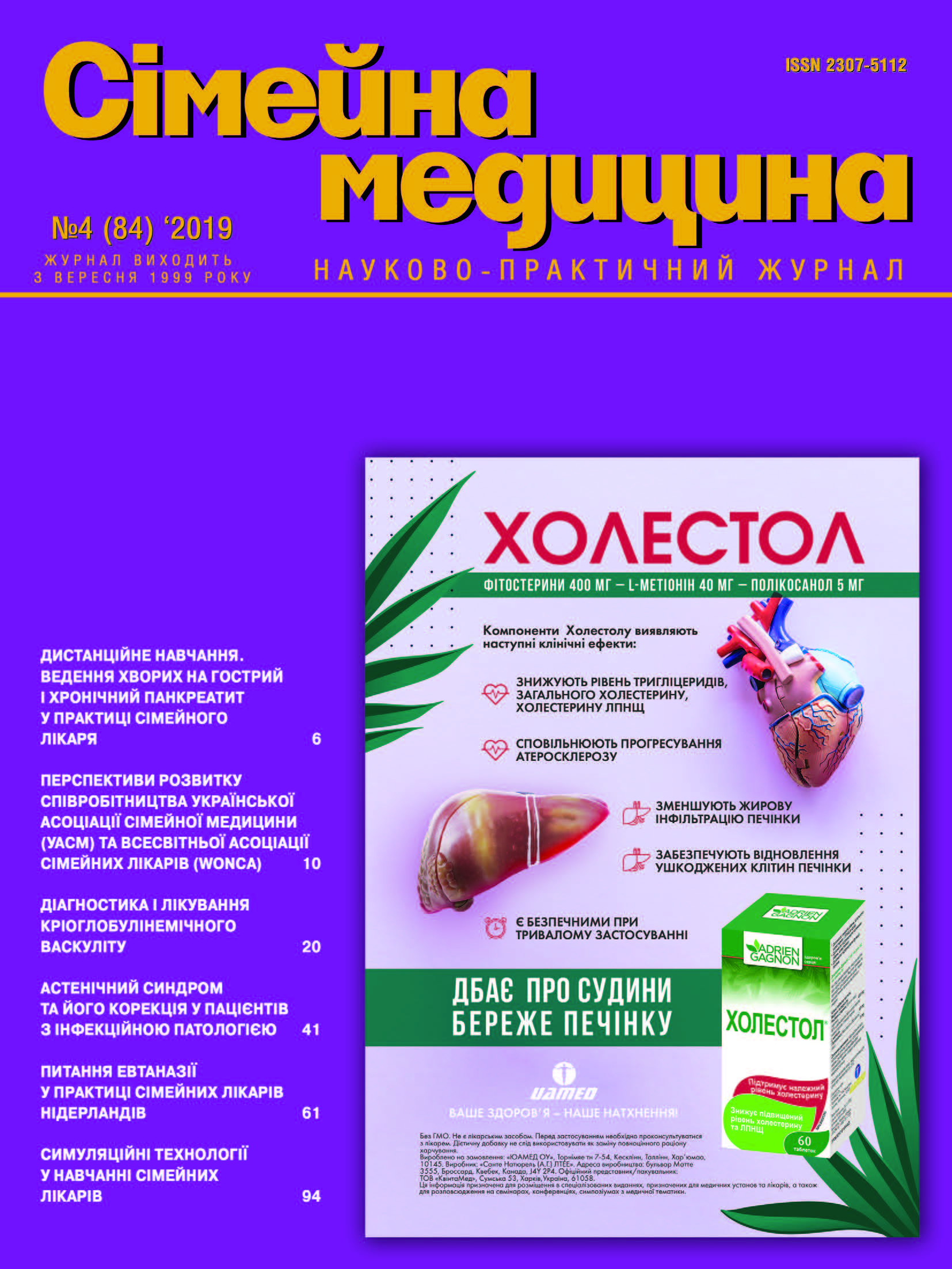Questionnaire Design for the Distinction of Risk Factors of Iron Deficiency
##plugins.themes.bootstrap3.article.main##
Abstract
The article deals with the problem of early detection and prevention of iron deficiency. Literature data analysis suggests a different prevalence of iron deficiency (ID) in economically developed and developing countries. The part of population which a high prevalence of anemia are adolescents.
The objective: the purpose of the study was to make a questionnaire design to find the risk of developing iron deficiency anemia among adolescents.
Materials and methods. An analysis of international publications was conducted describing the methods of questionnaire development, the feasibility of introducing questions into the questionnaire, the method of conducting a population survey on the risk factors for iron deficiency anemia and latent diabetes.
Results. There was designed the questionnaire to determine the risk of ID anemia in adolescents.
Conclusion. The questionnaire is subject to testing in a pilot study for final approval and use in a subsequent sociological study.##plugins.themes.bootstrap3.article.details##

This work is licensed under a Creative Commons Attribution 4.0 International License.
Authors retain the copyright and grant the journal the first publication of original scientific articles under the Creative Commons Attribution 4.0 International License, which allows others to distribute work with acknowledgment of authorship and first publication in this journal.
References
World Health Organization. Global targets 2025. To improve maternal, infant and young child nutrition. – 6 October 2014. – Режим доступу: https://www.who.int/nutrition/globaltarget-2025/en/
Тарасова И.С. Железодефицитная анемия у детей и подростков // Вопросы современной педиатрии. – 2011. – Т. 10, № 2.
Белошевский В.А. Железодефицит у взрослых, детей и беременных. – 2000. – 121 с.
Воробьев П.А. Анемический синдром в клинической практике. – 2001. – 168 с.
Shireen Jawed, Sundus Tariq, Saba Tariq [et al.]. Frequency of nutritional anemia among female medical students of Faisalabad // Pak J Med Sci. – 2017. – Mar-Apr. – № 33 (2). – Р. 398–403.
Soon Ki Kim, Hee Sook Kang, Chul Soo Kim [et al.]. The prevalence of anemia and iron depletion in the population aged 10 years or older // Korean J Hematol. – 2011. – Sep. – 46 (3). – P. 196–199.
Djokic D., Drakulovic M.B., Radojicic Z. [et al.]. Risk factors associated with anemia among Serbian school-age children 7–14 years old: results of the first national health survey // Hippokratia. – 2010. – Oct-Dec. – 14 (4). – Р. 252–260.
Recognizing adolescence. World Health Organization 2014. Режим доступу: http://apps.who.int/adolescent/second-decade/section2/page1/recognizing-adolescence.html
Sixty-fourth World Health Assembly. Resolution WHA 64.28: Youth and health risks. Geneva, World Health Organization, 2011. Режим доступу: http://apps.who.int/gb/ebwha/pdf_files/WHA64/A64_R28-en.pdf, accessed 6 February 2014





